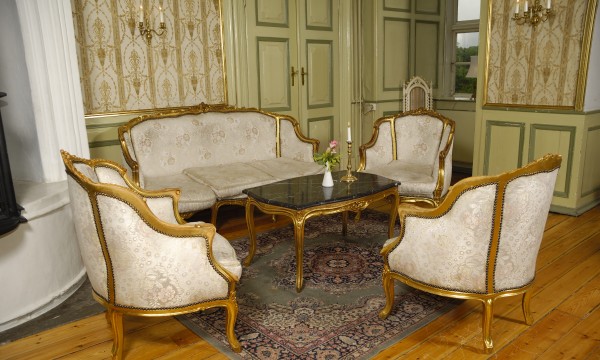When it comes to cleaning antiques, less is better. Some of the cleaning methods you'd readily use on everyday furniture can ruin the look and reduce the value of an antique.
- Browse Categories
- All Tips
-
Home & Garden
- All
- Appliances
- Bathroom
- Cleaning
- Crafts
- Decorating
- Electrical
- Flooring
- Furniture
- Garage Door
- Gardening
- Green Living
- Heating
- Home Alarm Systems
- Home Maintenance
- Home Remedies
- Home Security
- Home Staging
- House Sitting
- Junk Removal
- Kitchen
- Lawn Care
- Lock Systems
- Moving
- Outdoor Living
- Pest Control
- Plumbing
- Renovation
- Roofing
- Snow Removal
- Storage
- Tools
- Tree Service
- Health
- Family
- Travel
- Auto
- More Tips
Your account is now active!

Simple tips for cleaning antique furniture
July 28, 2015

1. The safest approach
- Limit cleaning antiques to simple dusting once every week or two.
- Wipe your antiques down with a soft, dry, non-abrasive cloth or chamois.
- Avoid furniture polishes — they will just leave a film that will attract more dirt, and polishing can sometimes damage the finish.
2. A more aggressive cleaning method
- Consider this only if you're willing to risk it. But first make sure that the finish isn't too fragile (breaking down, separating or, in the case of veneer, lifting).
- If the finish is in good condition, wipe it down with a slightly damp cloth and follow up immediately with a dry cloth. (Never saturate an antique with water — that would ruin even a stable finish.)
- If you need stronger cleaning power, mix 15 ml (1 tbls) of mild dishwashing liquid in 4 litres (4 quarts) of water.
- Dip your cloth in the solution, wring it out and wipe the furniture down quickly.
- Follow up right away with a dry cloth. (Test this method first on an inconspicuous spot to make sure the finish holds up.)
3. Waxing antique furniture
- This is something you should only do once every three years — and, again, only if the finish is stable.
- A dark paste wax (available at hardware stores) is a good idea, because it won't leave a whitish residue in crevices, which lighter waxes tend to do.
- Apply a thin coating of the paste wax with a soft cloth. Follow up right away with a clean cloth, rubbing the wax off until it's dry. (Normally, you would let the wax dry before buffing, but this technique allows you to apply a thinner coat and is friendlier to the finish, because it does not require such hard rubbing.)
4. If an antique has a water stain
- If the item is not very valuable you can try waxing the mark. Start by using a soft cloth to apply a paste furniture wax to the stain itself to see how much the surface darkens.
- Work your way outwards from the stain, attempting to create a match with the surrounding surface.
- If your antique is valuable, however, don't attempt to fix the stain yourself. Seek advice and help from a professional restorer.
5. Protect your antiques
- Don't store antiques in a dry room. A humidity level that's comfortable for your skin will be suitable for the furniture as well.
- Don't store antiques in a room with fluctuating humidity or temperatures. Both can result in cracking.
- Keep antiques out of direct sunlight.
- Don't place drinks or water-filled vases on antique furniture. Wipe up any water spills immediately with a clean, dry cloth.
- If an antique has gilding (gold leaf) anywhere, be extremely careful. A damp cleaning rag can wipe off water-based gilding. Use a dry rag and a delicate touch to clean gilding.
National advertising powered by Mediative.com. Yellow PagesTM, Walking Fingers & DesignTM, YP.caTM, Find. & DesignTM, YellowPages.caTM, Canada411TM and YP ShopwiseTM are trademarks of Yellow Pages Digital & Media Solutions Limited in Canada. All other trademarks are the property of their respective owners. Copyright © 2018 Yellow Pages Digital & Media Solutions Limited. All Rights Reserved.
More Tips
The material on this website is provided for entertainment, informational and educational purposes only and should never act as a substitute to the advice of an applicable professional. Use of this website is subject to our terms of use and privacy policy.






